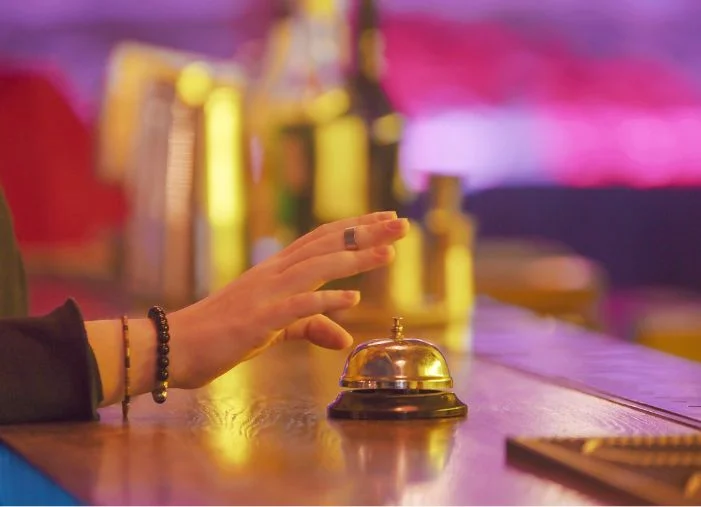
It was one of Cialdini’s bedrock principles. The one that created demand out of thin air. That compelled people to finally, at long last, take action. To buy, share, and break through the inertia that prevents any change whatsoever.
It’s urgency.
Scarcity forces us to make a decision—to change, even though we’re hardwired not to like change.
Sure, we want the upside. But we can’t stomach the downside in most cases. So nothing happens.
That new pair of shoes just sits in their cart. Or the lead stops following up because “they’re still thinking about it.”
So how do you get them to take the next step?
Here are 13 tried-and-true urgency-inducing tactics you can start using to increase sales.
1. Product Attributes
Product attributes are one of the first places to look for scarcity in action.
For example, notice how that third pair of boots stands out because of the temporary price break.
Now let’s book a vacation.
You pull up Expedia, punch in a city and some travel dates, and hit enter. What you’re met with is a completely commoditized shopping experience. Hotels and vacations and flights are lined up like a cattle call. And you just scan the prices to determine which hotel looks good.
The problem is that most people are just looking. There’s no urgency. So people bounce without booking 81% of the time.
How do you motivate them to take action? Check out how many product attributes Expedia highlights on this page:
The green bar highlights a daily deal. There’s star ratings. A little VIP icon. Microcopy from reviews like “Very good!” and “Excellent!”
There’s also red (danger!) text letting us know exactly how many other people are looking at booking these hotels (taking them from us!) in the last 48 hours.
Not to mention, the little yellow notification over on the right that confirms this destination is popular with other travelers as well.
Phew. That was exhausting just typing it all out.
We’ll analyze some of these specific techniques in more detail soon. However, just know that scarcity doesn’t just mean “only three products left.”
2. Hyper-Specific CTA’s
The Next Web wanted to get more traffic to their deal pages. (‘Cause, you know, this is where the money’s made.)
The primary CTA (or call to action) on the site was a little text link in the main menu navigation. They tested two new versions of the CTA to 163,000+ visitors:
- The first variation was simply “Deals”
- The second variation stated a specific number of deals (like “104 Deals”)
The results?
The variation with a specific number of deals increased user engagement by 257.8%.
The specificity, it was hypothesized, “set visitors’ expectations, thereby increasing the amount of traffic that would engage with the ‘Deals’ CTA in the navigation bar.”
FOMO was part of it. Just the simple inclusion of a number suddenly makes people realize what’s in store, and they now understand the “lost value by not taking the action you want them to take.”
3. Site Overlays
They can be annoying. Even rude.
But when you consider the alternatives for driving conversions, you quickly realize that options are running out.
Nobody looks at banner ads today. Haven’t for years. People are also proactively trying to banish them from existence. Ad blocking technology has grown 4X in just the past few years.
Case in point: Those wimpy little sidebar opt-ins only convert at a dismal 0.4%.
The solution? You’re not gonna like it.
But overlay and pop-up technology can increase conversions 2100%.
Websites with pop-ups consistently outperform websites with no pop-ups, and (in case you missed it) can increase conversions by 2100%. Did I mention 2100%?
Sumo analyzed millions of data points and found that the best pop-ups and overlays can reach conversion rates of almost 10%.
Ok… that’s super high. Now we’re listening.
So what distinguishes a good pop-up from a bad one? (Besides, of course, the offer.)
Let’s take a look at one good example from Neil Patel:
Whoa. Not your standard pop-up. There’s a progress bar at the top. Additional text and an arrow over to the right (a visual cue).
And right at the top, in huge block letters, is a countdown timer.
4. Countdown Timers
154 million people purchased something on Black Friday last year.
The reason is summed up perfectly in the lamest, PR-puff quote ever:
“It was a strong weekend for retailers, but an even better weekend for consumers, who took advantage of some really incredible deals.”
Online, Groupon (are they still a thing?) took that idea and ran with it, creating a daily deal site that rode on the backs of small businesses turned flash sales into big business.
One of the best converting websites online – believe it or not – is the QVC. Which sounds incredibly hard to believe. Until you visit their website and browse around for a bit.
Immediately upon entering their site, you’re met with a daily deal front-and-center:
Thrive’s Ultimatum is one handy little add-on tool. It’s a WordPress plugin that you can install to re-create these limited-time only deals and display them across your site. They even have a feature that restarts the clock for individuals (so it doesn’t have to be set by a fixed-date, but by an individual’s own behavior).
The countdown timer is becoming ubiquitous online now thanks to simple tools like this. Earlier we saw it on Expedia. Then in a site overlay. Now on the QVC. And soon we’ll see it a few other contexts as well.
But first, let’s discuss a close cousin of the countdown timer: limited-time only availability.
5. Limited Availability
When you visit QVC’s site around lunchtime (personalization! see #9 below), QVC will introduce their Lunchtime Specials.
This little section shows up on their homepage and is only available for five hours that day.
Here’s another travel industry example: Look up a hotel on Expedia, and you’ll see that their “limited inventory” (heavy on the air quotes) will only have a few select options left before the price jumps back up.
(Yikes! Could you imagine staying at a $20 hotel? Be sure to bring your own disinfectant wipes.)
Digital products notoriously have no inventory costs. There’s no such thing as a limited quantity per se.
Unless you artificially restrict it anyway to boost conversions when you do “open the doors.”
One of the best in the business is Ramit Sethi of I Will Teach You to be Rich. Head over to their site and try to purchase a bigger product or program. Curiously, they don’t let you. Instead, you gotta sign up for their newsletter first.
These products are expensive. Intangible. So it takes a little bit of education before you’ll understand the value.
It’s only after a little nurturing that the sales offer becomes available (for a limited time only, of course).
6. NEW!
We’ve all been there, done that. But we’re attracted to newness.
Power words jump off the page. They arrest attention, break patterns and get you to look.
Chief among the most persuasive words are “New” and “Now.” With that in mind, feast your eyes on this:
These products are being featured on QVC (now). Half of them are NEW. One’s on sale. The other is QVC’s Daily Deal.
We like new stuff. Shiny stuff. It’s why we check email and Twitter 10x a day. (Even though most of the stuff we see is junk.) That novelty gives us a tiny shot of dopamine. Enough to sustain us for, well, about another two and a half minutes until we check it again.
The fact that these products are being featured on television (now) also enhances their perceived credibility, too.
7. Notifications
Buy Whole Foods Online is an e-commerce site in the UK.
In order to better reach on-site visitors, they started using targeted push notifications with special offers from PushCrew.
When they first introduced this tactic, 71 people (out of 97 total), followed through to purchase.
These push notifications work best when tied to something that someone is doing right now. For example, the product they’re looking at or the blog post topic they’re reading.
Drift turns the once lame live chat into a fully featured messaging and notification platform. You can select WHAT gets displayed WHEN. So the message can be tied to specific page views for example, or the number of times someone has visited.
Neil Patel uses his notification to show a – what else – countdown timer that’s tied to an offer that’s about to expire. (It even rings to get your attention. No joke.)
Click on it, and it’ll expand into something that looks like the pop-up we featured from him earlier (complete with progress bar indicating you’re pretty much already done and ready to receive the offer).
This is also a perfect segue because it’s the offer here that dictates conversions over everything else: the autopilot webinar.
8. Autopilot Webinars
Webinars are a classic piece of a B2B marketer’s arsenal.
But here’s the struggle: Getting people to actually attend the damn thing.
Maybe 30% of those who sign up will attend. If you’re lucky.
You can’t blame them, though. They signed up like two weeks ago and it’s easy to forgot. They had that urgency two weeks ago. But it’s dissipated now over the past few weeks and they’ve got other stuff on their minds.
The solution?
Run them every single day. Hourly even.
That’s impossible! You’re only a mortal.
And yet, that’s what it appears is happening…
Thursday morning, 8:12 am on March 30th. I went to a site and saw this:
Trust me when I say that I’m not that lucky. Good fortune like that doesn’t just happen. Merely a coincidence.
No. It’s more likely something like WebinarJam was used to re-run a previously live webinar so they could take advantage of the urgency that I was feeling right at that moment.
That removes the huge lag in time, reducing the likelihood that someone would sign up and leave forever. And it gives them a better shot to of course sell something at the end of the webinar.
9. Next-Level Personalization
A third of marketers say personalized marketing is the most important trend, and almost everyone (77%) agrees that it’s an important development.
But “Hey $FNAME” doesn’t cut it.
Instead, check this out:
Entire sections of a homepage curated and recommended based on your past behavior on their site.
Your landing pages should follow suit—pulling in personal details like if someone has visited your site before, purchased from you in the past, or simply the city or time of day they’re visiting.
Optimizely’s Personalization is one such tool that customizes what you see based on some previous detail. This example shows a cup of coffee in the background and a simple but friendly Good morning! (based on time of day that the page is viewed), which immediately stands out against a sea of static sameness across other sites.
10. Pre-Suasion
Behave (formerly WhichTestWon) featured an email test from online real estate site Home Union. This email is designed for investors. Keep that in mind when you compare the two versions:
The one on the left gets into technical investment details. The one on the right, key home features.
You’d think the first variation (investment details) would appeal to professional investors. I did. And yet we’d all be wrong.
The second email (key features) resulted in a 33.8% lift in click-to-open.
The reasoning? Pre-Suasion (also Cialdini’s latest effort).
In other words, the first email focused on stuff that, while important, wouldn’t materialize for years and years and years. The second focused on features that they could get right now.
Behave also featured an excellent quote from The Business of Choice, by Matthew Wilcox:
“Consumers are far more motivated to make a decision that seems beneficial in the immediate-term — even if the benefits diminish over the long-term.”
Like when they’re going to get something RIGHT NOW…
11. Immediate Gratification
Amazon’s 1-Click to Buy feature is patented.
It saves your pre-set preferences so that all you (the consumer) have to do is click a single button (on any device) to immediately purchase the product.
Helpful and convenient, no doubt. But why take the time, effort, and money to patent something like that?
Because it’s worth billions.
Amazon Prime customers spend $1,340 annually – double what non-prime ones spend. The hallmark of that program is the free two-day shipping. And Amazon is even doubling down, investing in planes and drones to deliver things faster.
So they’re doing everything in their power to get you products faster. Like, now.
According to BigCommerce’s Tracey Wallace in their Omni Channel Retail Report, “shipping cost and speed (80%)” are the second most important reason behind why people buy (or not) online (after price).
So much so, that they’re essentially subsidizing this cost for customers:
“For retailers, especially independent boutiques and webstores, perks like ‘free shipping’ are being more frequently offered and considered a marketing expense. For larger chains like Amazon, the net loss is worth the increase in brand reputation.”
Of course, other companies are going to come out with their own variation. QVC uses a Speed Buy that works similarly. And their handy Delivery Date Estimate on every product page helps you figure out exactly when to expect that product hitting your doorstep.
12. Risk-Reversing Payment Options
QVC has become famous for their installment payment plans.
This infomercial-esque technique allows people to split up payments into equal installments over the course of a few months. That way, what looks big and expensive suddenly becomes affordable for those on a tight budget. (Like the old people that buy this stuff.)
QVC even sweetens the deal with their QCard that has interest-friendly terms.
High-end, expensive services can be sold the same way. Here’s how Work the System splits up payment for their coaching services into budget-friendly installment plans:
New e-commerce payment options are popping up from companies like Affirm, who’re essentially doing the same thing (albeit, financing purchases themselves).
You can apply to their service and have the product price split over a few months instead of one huge lump sum.
13. Automatic Follow-up Emails
Last but not least is good old-fashioned marketing automation.
Y’all know the drill. It’s got the power to increase sales 34%. Not to mention slashing your internal overhead of manually having to try and send this stuff out.
The Shopping Cart Abandonment idea can (and should) be applied to nearly everything that happens on your site. Every almost purchase that got away. No matter if that’s a product or simply someone looking at your Plans & Pricing page.
So when they search for a hotel but don’t purchase, the corresponding follow-up email goes out immediately, urging them to come back and book.
Getting what you want, when you want it
Selling online is difficult because so many online goods and services are “nice to have,” not “essential.”
(Not to mention, competitors are a click away and there’s nothing preventing your prospective customer from navigating away at any time.)
The brick wall standing in between you and more customers is inertia. In order to increase sales, you first have to increase urgency so people want have to buy NOW.
The antidote to inertia is urgency.
Trouble is, urgency doesn’t always just…exist. You have to create it, and you can start by using one of these 13 urgency-including tips and tricks to get people to take action once and for all:
- Enhanced product attributes
- Specific numbers in CTA’s
- Pop-up offers
- Countdown timers
- Limited availability
- The word “new”
- Push notifications
- Autopilot webinars
- Extreme personalization
- Near-term benefits
- Immediate gratification
- Lots of payment options
- Automated follow-ups


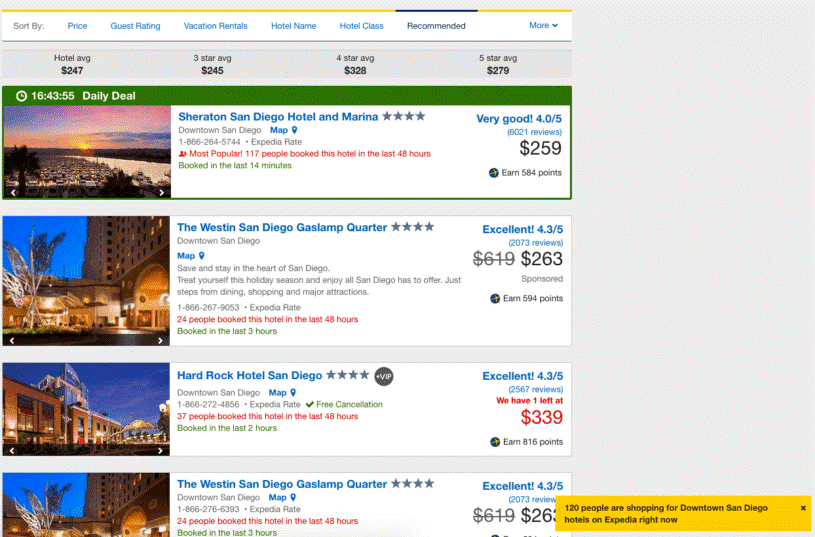

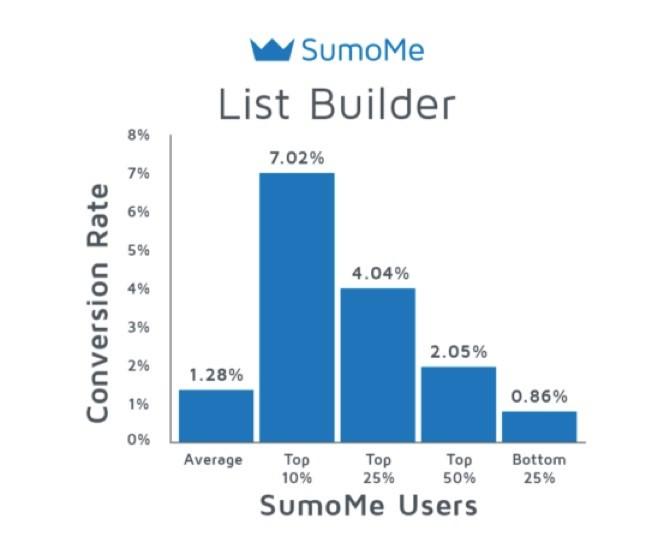
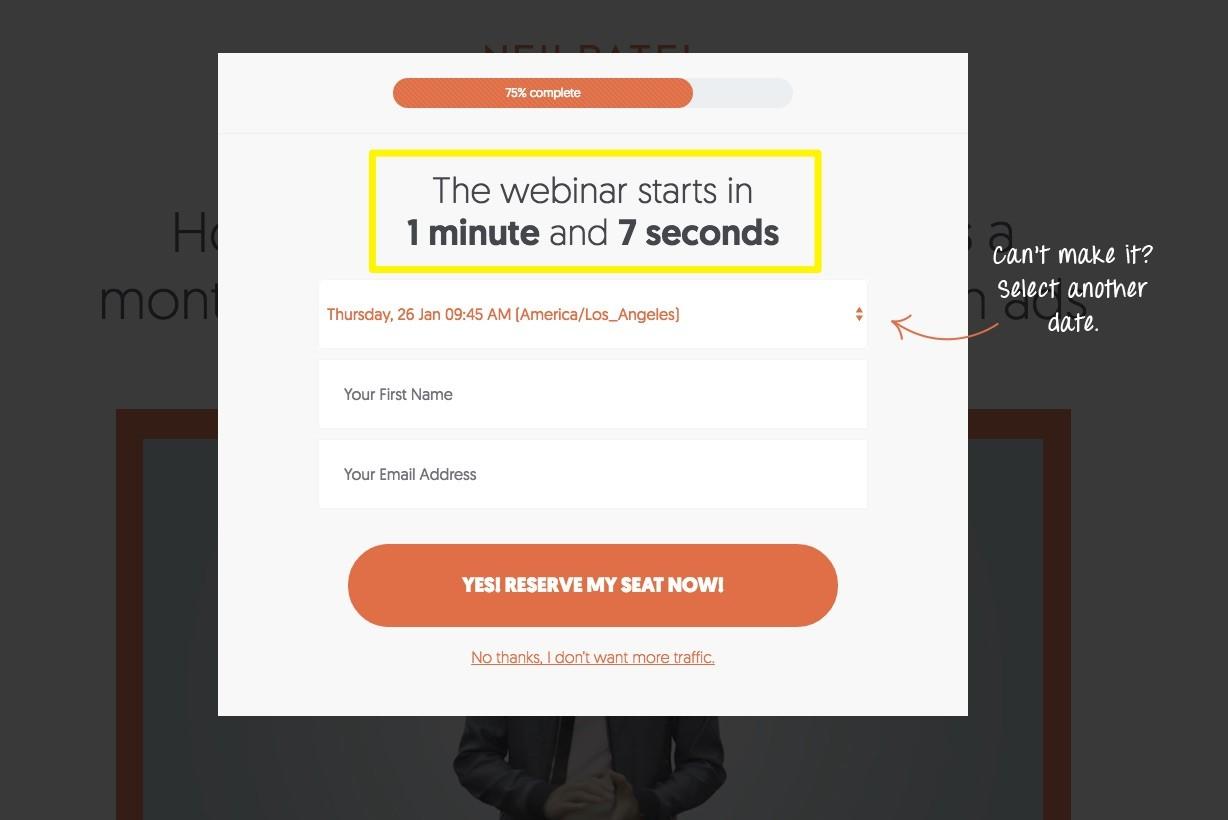

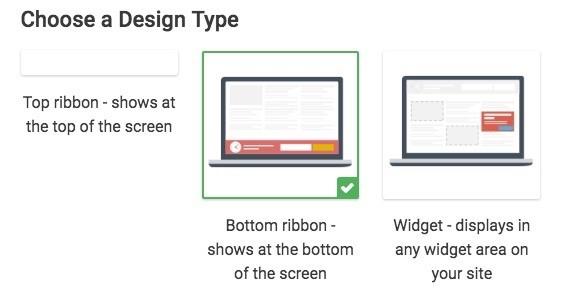


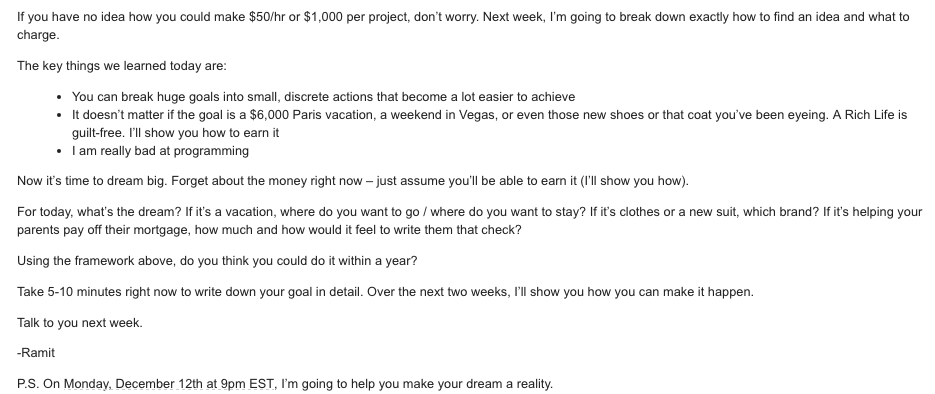



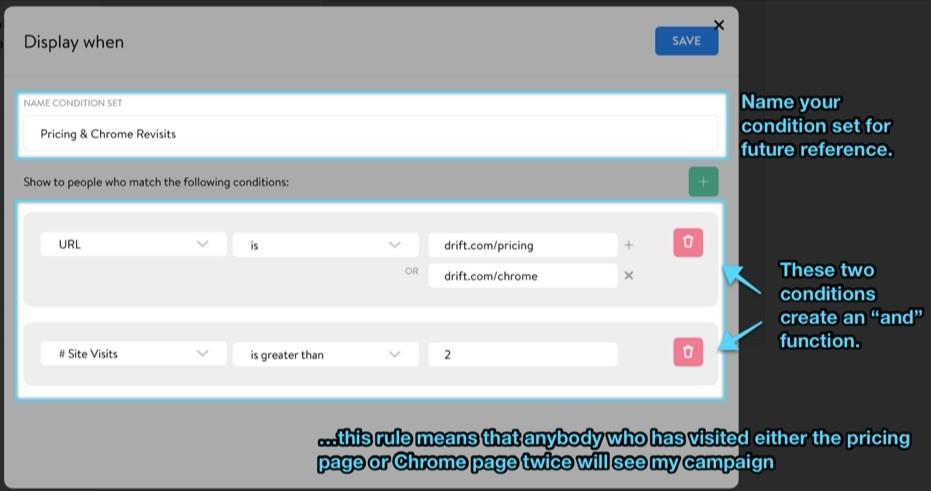

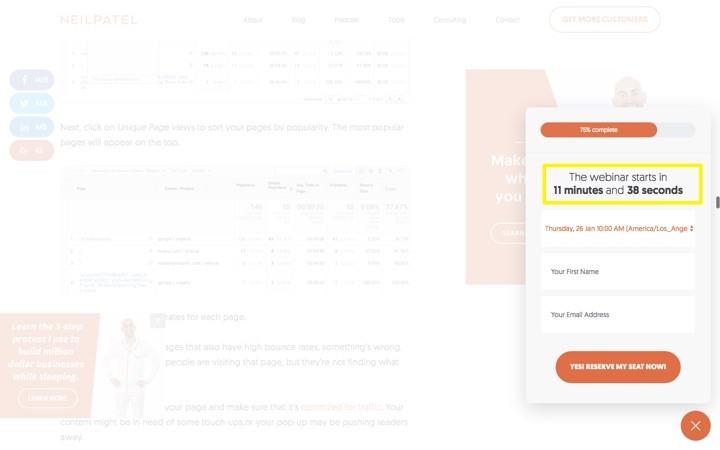

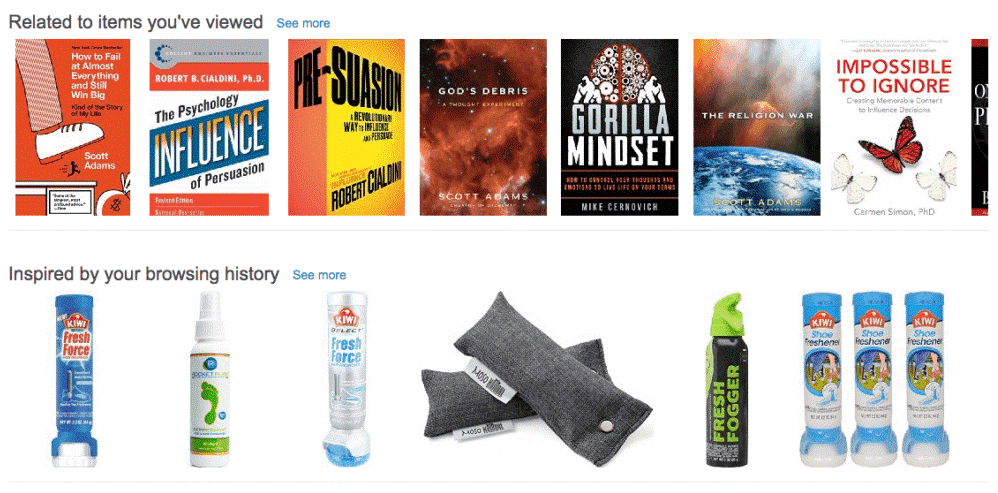
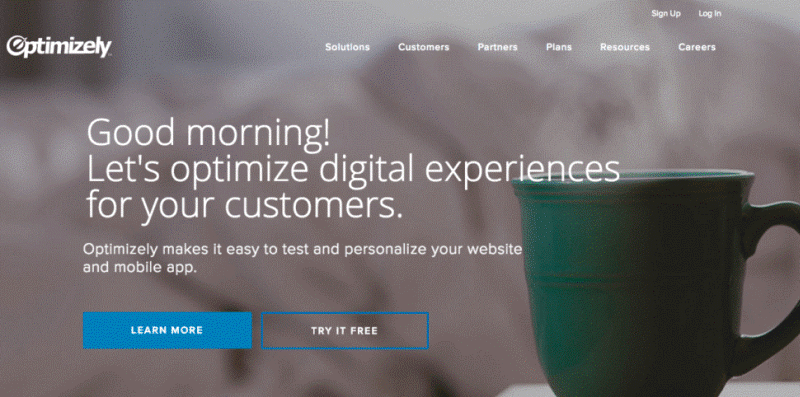


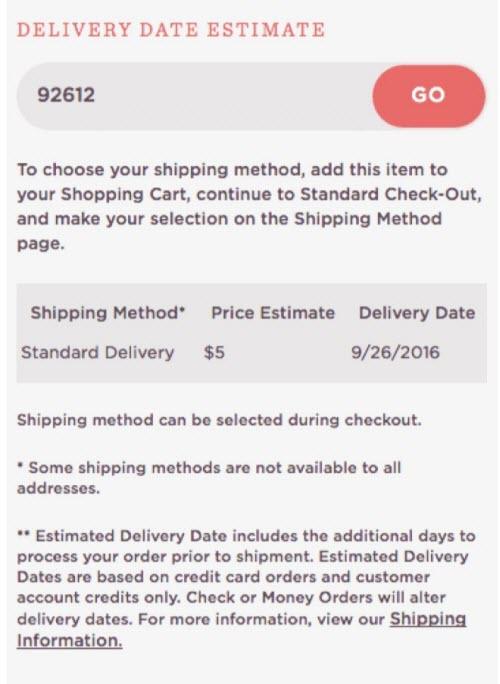
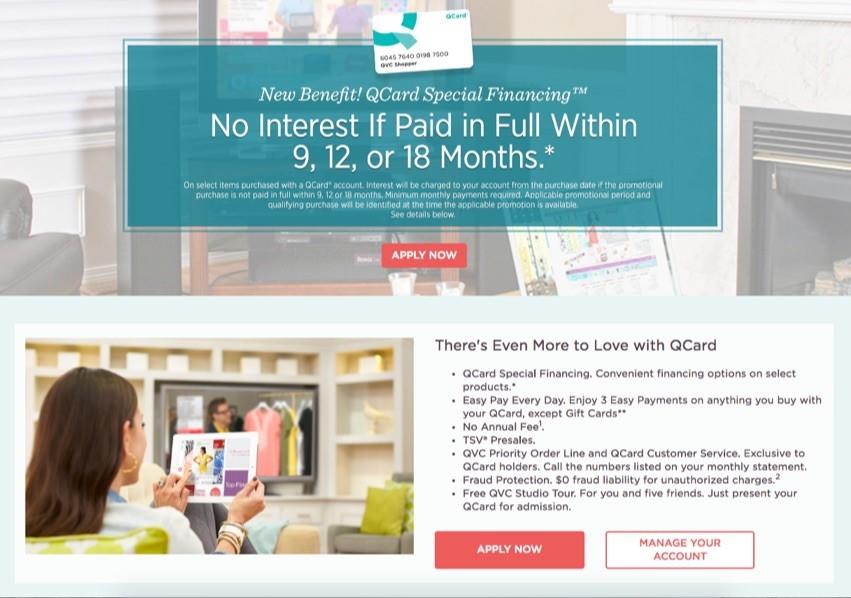


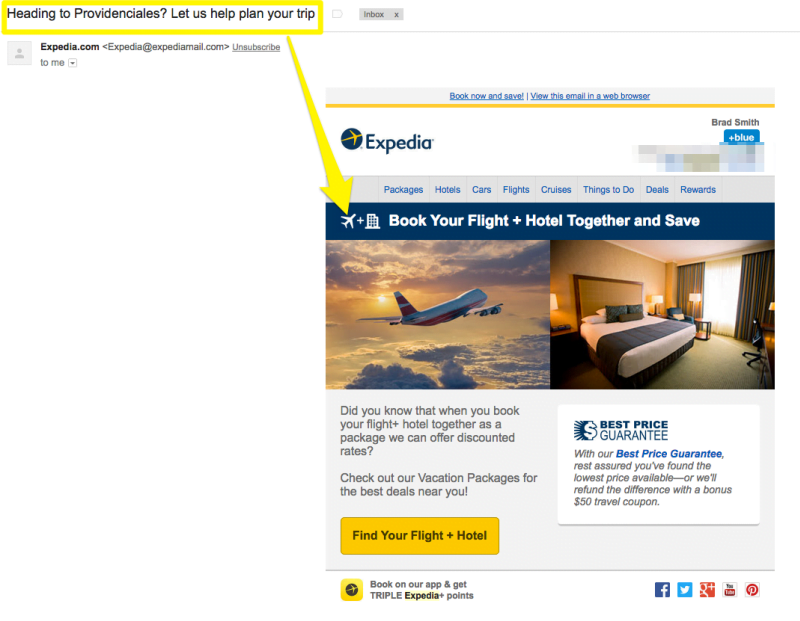

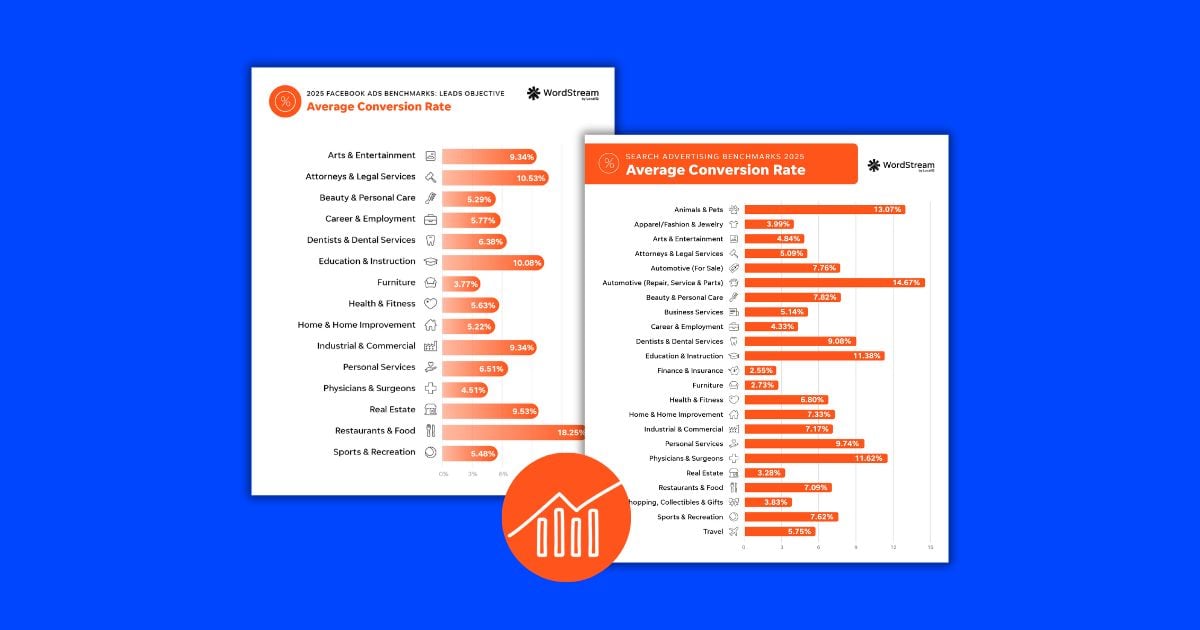

![Search Advertising Benchmarks for Your Industry [Report]](https://www.wordstream.com/wp-content/uploads/2024/04/RecRead-Guide-Google-Benchmarks.webp)


